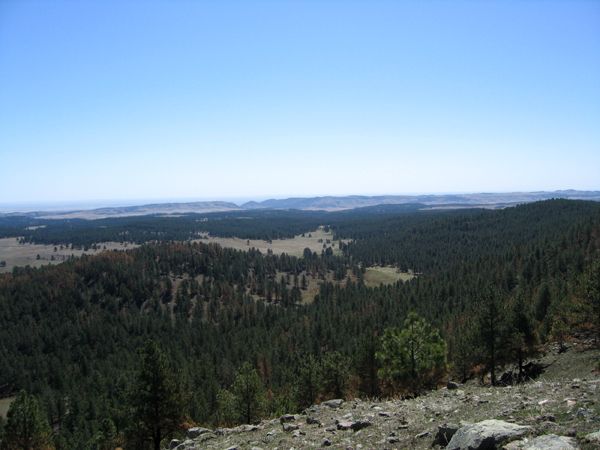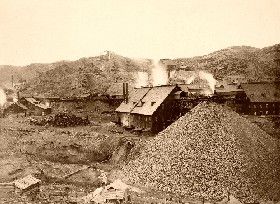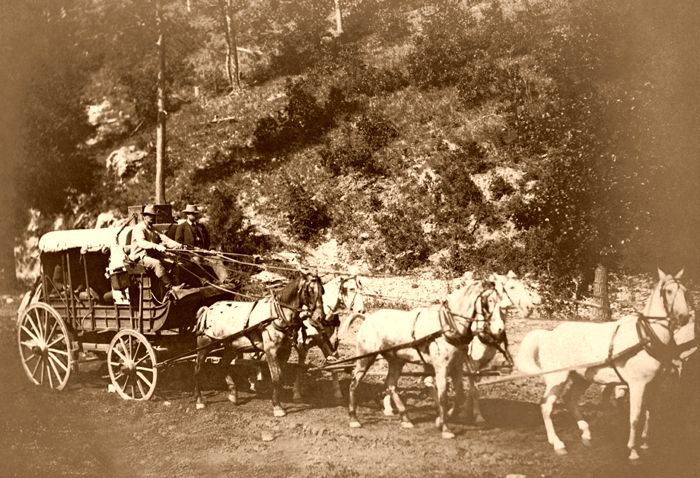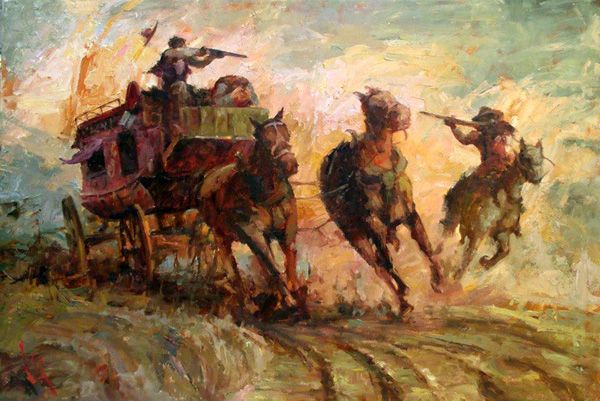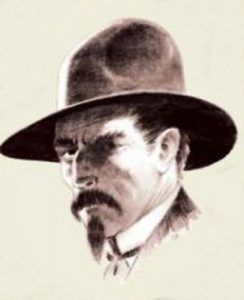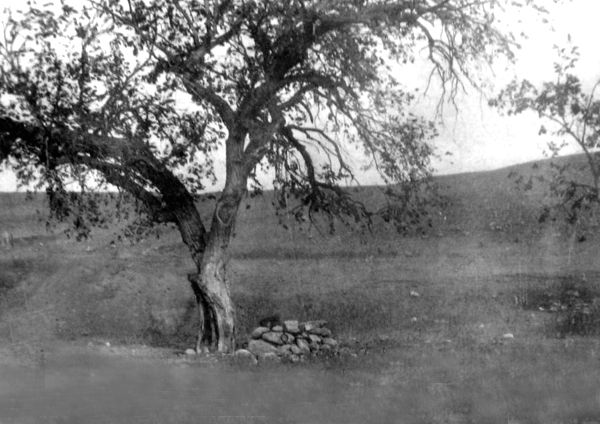Cornelius “Lame Johnny” Donahue was an outlaw stage robber and horse thief who operated in the Black Hills of South Dakota.
Donahue was born in Philadelphia, Pennsylvania, in about 1850, where he grew up to attend Girard College, an elementary through high school center that took in impoverished and orphaned boys. Attending from 1862 through 1872, his academic and conduct scores were very good.
Afterward, he went to Texas, where he became a cowboy. However, he had a limp; some say it was because of a fall as a child, and others said he had earlier contracted polio. Because of his physical condition, he didn’t fare well as a cowboy and turned to horse thievery.
In the 1870s, Donahue left Texas and wound up in Deadwood, South Dakota. Going by the name of John Hurley, he prospected for gold along Castle Creek. Unsuccessful, he worked as a Custer County deputy and later as a bookkeeper for the Homestake Mining Company. He was later recognized as the Texas horse thief and fled the area.
He soon returned to his old lifestyle of stealing horses and later joined a ragtag group of men who began robbing stagecoaches.
Lame Johnny and his crew weren’t the only stage robbers working the region at the time, and the Homestake Mining Company and the Deadwood-Cheyenne Stage Line took elaborate precautions to protect their shipments. Gold was carried on a special steel-lined coach called the Monitor, which featured portholes through which armed guards could shoot at robbers. Inside was an iron safe that the manufacturer claimed could not be opened in less than six days without knowledge of the combination. This specially outfitted stage made weekly “treasure runs” to Cheyenne.
On September 26, 1878, the Monitor stagecoach left Deadwood with a load of gold, three guards, the driver, and two passengers. At about the same time, a band of outlaws rode into Canyon Springs Station about 37 miles southwest of Deadwood in northeast Wyoming. The bandits locked the station attendant, William Miner, in the grain room, hid in the barn and prepared for a shootout.
When the stage pulled into the station, no one was seen. Gene Barnett, the driver, and Gale Hill, who was riding “shotgun,” hopped down to investigate when shots began to ring out. As the bullets flew, one passenger, Hugh Campbell, died, and Gale Hill was severely wounded.
Scott Davis, a shotgun messenger riding inside the stage, killed one of the outlaws named “Big Nose” McLaughlin and fatally wounded another, but the others escaped. Afterward, the road agents had little difficulty in breaking open the supposedly impregnable safe and made off with about $3,500 in currency, $500 in diamonds, hundreds of dollars worth of jewelry, and 700 pounds of gold dust, nuggets, and bullion. The loot was estimated to have been worth as much as $140,000 at the time, amounting to over $3.6 million (2019). The outlaws loaded the gold and the rest of the loot into a wagon and fled east.
In the meantime, when the stage didn’t arrive at the Jenney Stockade station to the south, three relief messengers, Boone May, Jesse Brown, and Bill Sample, rode out to investigate. Along the way, they came across stagecoach messenger Scott Davis, who had borrowed a horse from a neighboring ranch. The four men then proceeded to the Canyon Springs Station, where they found the stagecoach abandoned, the treasure box empty, Miner locked in the granary, the relief team stolen, and other employees bound and gagged and tied to trees in the woods.
A large reward posted by the Homestake Mining Company sent posses following up on every reported sighting of the fugitives. A month later, the stage line reported that over 60 percent of the stolen cache had been recovered, but two large gold bars remained missing.
High on the suspect list was “Lame Johnny” Donahue, and before long, famed livestock detective Frank “Whispering” Smith was hot on his trail. While Donahue was on one of his usual horse-thieving trips to the Pine Ridge Reservation, Smith arrested him and took him to Chadron, Nebraska, where he was jailed. In July 1879, Donahue, escorted by Frank Smith, was loaded onto the Sidney-Deadwood Stage to travel to Deadwood to stand trial. No chances were taken with the prisoner as he was shackled, handcuffed, and his leg irons riveted to a metal plate attached to the bottom of the stagecoach.
Notorious sharpshooters Boone May and Jesse Brown escorted the stagecoach. Near Buffalo Gap, South Dakota, May and Brown left the stage for unexplained reasons, and “Whispering” Smith retained sole responsibility for Lame Johnny. Eight miles north of Buffalo Gap, several masked riders stopped the stage, who forcibly took Johnny from the coach, and the stage was sent on its way.
Officials initially assumed that he had been “saved” by one of his outlaw cohorts, but that was not the case. The next day, Lame Johnny was found hanging from a nearby cottonwood tree, still in his shackles. Another party that later passed by buried him in the shade of the cottonwood tree. The area where he was lynched is now called Lame Johnny Creek.
Once, his grave was adorned by a wooden headstone that read:
Pilgrim Pause! You’re standing on
The molding clay of Limping John.
Tread lightly, stranger, on this sod.
For if he moves, you’re robbed by God
Years later, several local ranchers dug up the grave to move it to another location. They found Johnny’s body still shackled, but the head was missing, as had been the rumor shortly after the time of the hanging. The men removed the shackles and boots before re-interring the body. Johnny’s boots were displayed in a Buffalo Gap store until a fire in the late 1880s destroyed both the store and the boots. One shackle ended up in the State Historical Society Museum at Pierre; the other went to the 1881 Historical Museum in Custer.
It has never been established why his three highly experienced escorts could not protect him. Years later, Brown claimed that he tried to ride closer when the trouble began, but a voice in the bushes warned him not to.
Later, many people believed that Johnny wasn’t even involved in the well-planned heist as it was too sophisticated for the small-time horse thief. In fact, the robbery was attributed to Jim Carey, a former scout for General George Custer, as he was alleged to be the mastermind of the Homestake robbery, along with associates Frank McBride, Doug Goodale, Al Spears, and “Big Nose” McLaughlin. Carey also fell victim to vigilante justice, and he was hanged at the Jenny Stockade in Wyoming.
The two large gold bars were never recovered; many have long believed they were hidden near the old Canyon Springs Stage Station. The log station no longer stands today.
Also See:
Sources:
Engebretson, Doug; Empty Saddles, Forgotten Names: Outlaws of the Black Hills and Wyoming, North Plains Press, 1982
Griffith, Tom D.; Outlaw Tales of South Dakota, TwoDot, 2008.
Black Hills Visitor
Treasurenet
Wikipedia
Wyoming Tales & Trails

